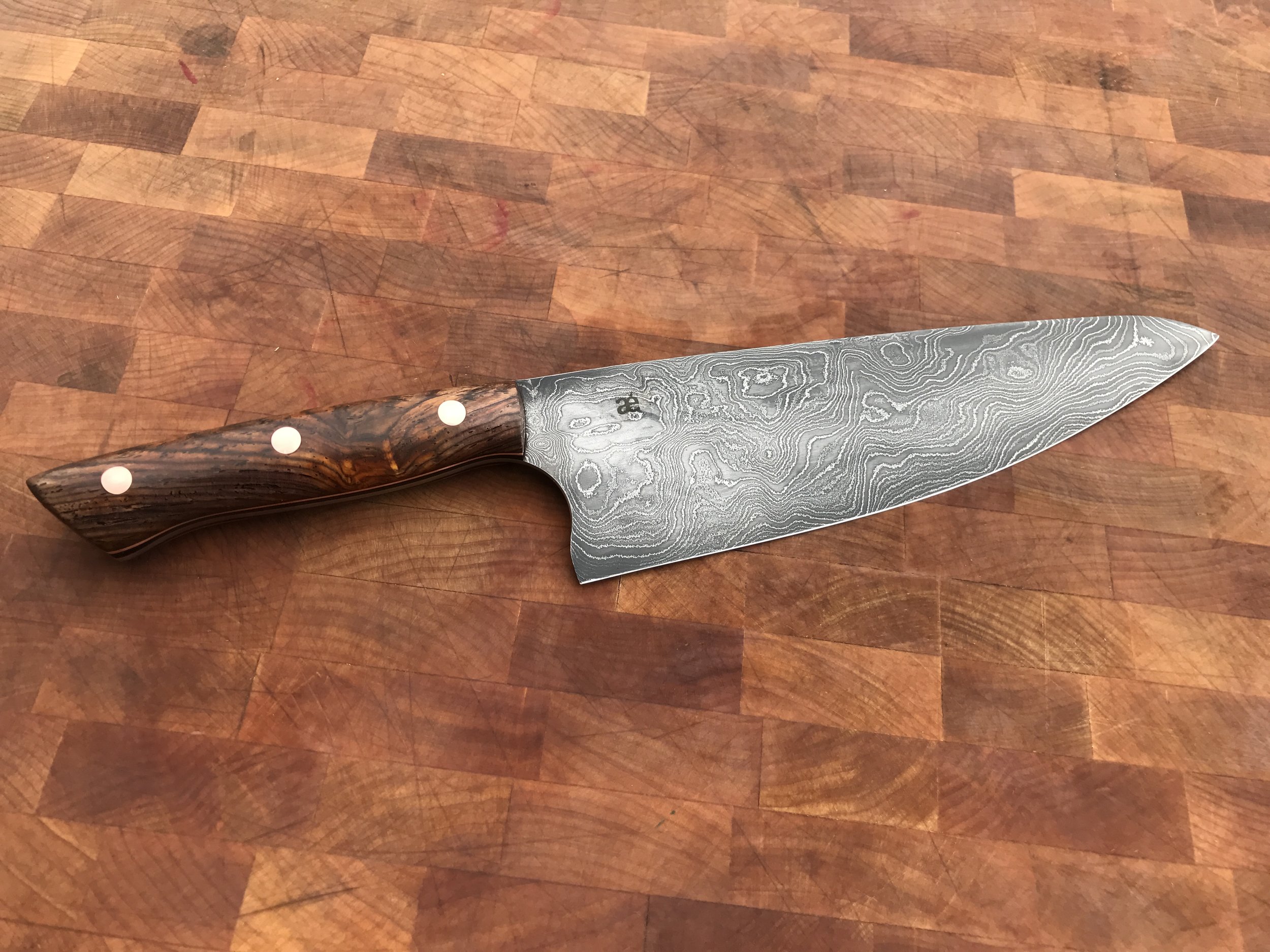our mission is to design and build beautiful handcrafted knives for the kitchen and for the field.
With a focus on community and sustainability, our goal is to connect our neighbors to tools that last.
MEET THE MAKER
Knives have long been a source of fascination for Aric. Whether watching his parents cook, starting fires during backcountry camping and fishing trips with family, or viewing 12,000 year old bits of flint in a museum, he realized from an early age how valuable a good knife could be. As one of our earliest and oldest manufactured tools, there is something almost instinctive about holding a knife where one can sense it's inherent function and usefulness. In museums, libraries and book stores, if he wasn't learning about natural sciences, he was pursuing knowledge about arms, armor and tools of cultures and peoples that came before us.
As an adult at university studying biological sciences, he developed a love for cooking. While he searched for just the right knife to carry on camping trips or use in the kitchen, Aric started teaching himself how to sharpen knives with whetstones. Over time, the search for a sharp edge on a good knife lead to thoughts of making knives. Though he holds a bachelors degree in Biology, his first intellectual love, knife making has become an avenue for creation and expression, with the ultimate goal of making beautiful, functional tools that can be passed on for generations.
thE Knife-Marking pROCESS
Each knife we make is truly unique, but the process is always the same.
Profiling the Knife
Whether we start a knife with a stock removal method or hammer forge it to shape, every knife starts with profiling. This is where we establish the basic shape of the knife out of a piece of high carbon steel with known chemistry and metallurgical properties. Some knives are designed as we go, feeling out the lines and curves as they develop, and sometimes they start on a sketch pad, with very deliberate measurements and properties based on a customers request, or just some specific design element we want to execute on.
Once the knife has been shaped, we start the process of establishing the geometry ahead of heat treatment. In every knife, the geometry does the cutting, so getting it right is of paramount importance. We also take any hammer forged knives through several thermal cycles to relieve any stresses, and start refining the grain structure ahead of the very stressful process of quenching (hardening).
Hardening the Knife
Hardening is the part of heat treatment that establishes a knife's limits, as well as it's every-day cutting potential. In this, we heat the steel up to what is called the critical temperature, at which point all the iron atoms in the steel open up their atomic linkages, allowing free carbon (as well as alloying elements) to diffuse into those newly open spaces. Then we cool it rapidly, typically in a quenching medium such as oil or pressed between aluminum plates, and those iron molecules slam shut down around the carbon, taking the steel from a malleable and somewhat plastic state to a very hard and brittle one. The next and final step in heat treatment for most knives is a set of temper cycles which dial back some of the hardness with low levels of heat (or add a point or two with subzero cry treatment) that add toughness to the blade. This heat treatment, along with the final geometry of the blade, will establish the limits of the blade - its elastic and plastic deformation limits - or how much load it can take before failure.
Dialing in the geometry
Once a knife has been properly heat treated, we finalize the geometry of the blade. We initially do this using a series powered abrasive belts, then finally dial in the geometry and clean up the scratch pattern by hand with finer and finer grits of sand paper and whetstones. Some knives are then given a forced patina with some sort of acidic solution, while others are left with clean, bright steel.
Making the Knife Handle
Once the blade itself is basically finished, we start on the handles. How they are shaped and what they are made of depends on the order since they are custom works, but all are ultimately affixed to the tang of the blade using a very strong epoxy, and typically some sort of pin for added mechanical stability. Handles are typically finished the same way the blades are: first using abrasive belts, then finished by hand until the desired feel and lustre is achieved.
Etching and Sharpening
The final two steps are to electrochemically etch our logo onto the blade, then to hand sharpen using whetstones. Each knife is then tested, and a light coat of our blaed butter is applied to shine up the handle before leaving our shop.
Friends of Ash Blaeds
Interested in partnering with us for your commercial knife care or corporate gifting needs?








